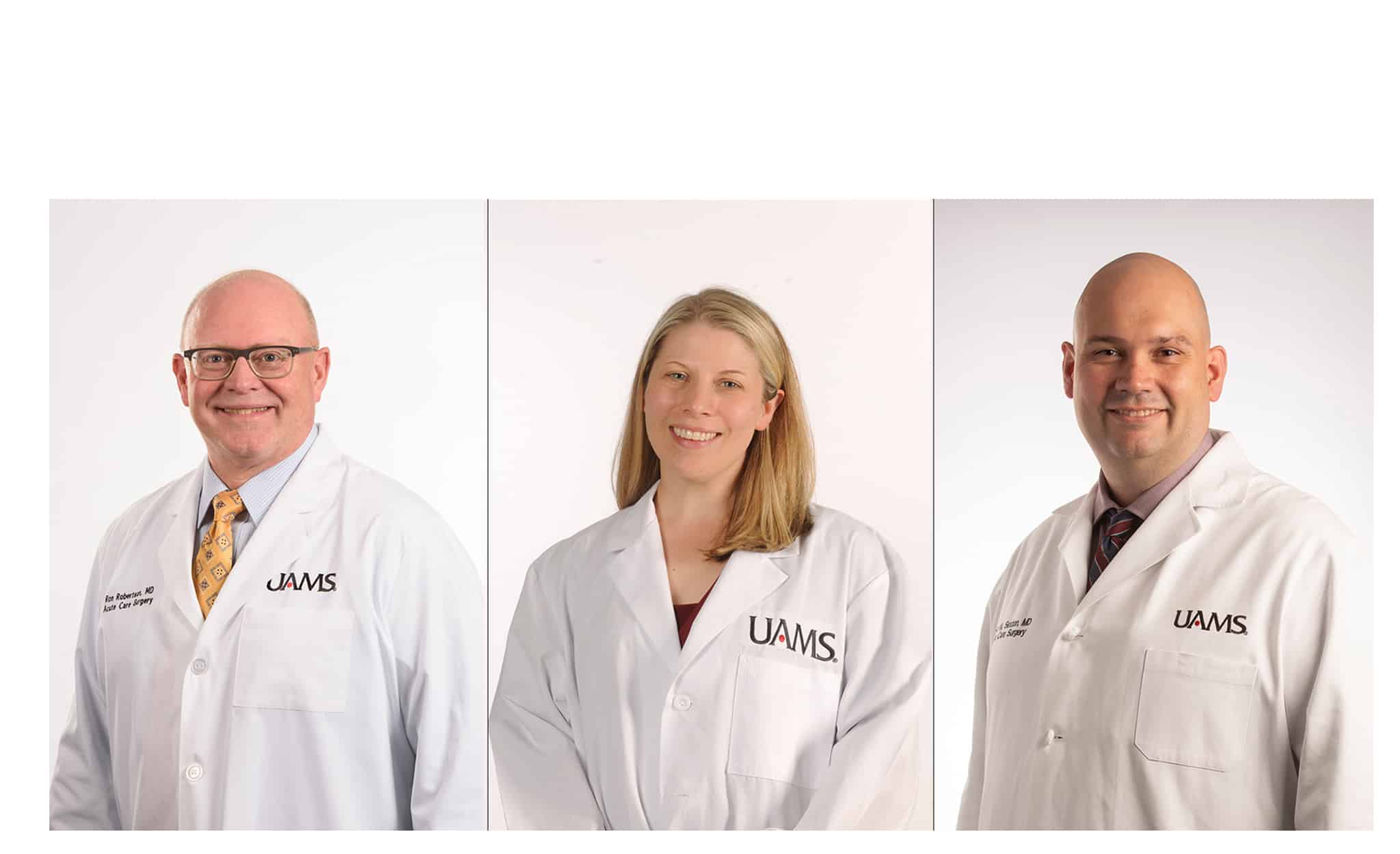UAMS Study Shows Palliative Care for Seriously Ill Surgical Patients Reduces Hospital Length of Stay
| A new study by doctors at the University of Arkansas for Medical Sciences (UAMS) shows that seriously ill surgical patients are discharged from the hospital sooner if they receive palliative care, which includes pain management.
The study, titled “Impact of Palliative Care Utilization for Surgical Patients Receiving Prolonged Mechanical Ventilation: National Trends (2009-2013),” was published in the September issue of The Joint Commission Journal on Quality and Patient Safety.
The researchers analyzed data from the National Inpatient Sample between 2009 and 2013 to identify adults who had a surgical procedure and required prolonged mechanical ventilation (MV) for 96 consecutive hours or longer, as well as patients who also had a palliative care encounter.
Palliative care focuses on improving the overall quality of life for patients and families at any stage of illness, including at the end of life. It can include areas such as pain and symptom management; spiritual and emotional support; and coordination of care.
“There is growing recognition of the importance of expanding palliative care beyond only patients at the end of life to surgical patients with serious illness,” said Ron Robertson, M.D., co-author and chairman of the Department of Surgery in the UAMS College of Medicine.
Findings showed the utilization of palliative care among surgical patients with prolonged MV increased yearly from 5.7% in 2009 to 11% in 2013. For prolonged MV surgical patients who died, palliative care increased from 15.8% in 2009 to 33.2% in 2013. The median hospital length of stay for patients with and without palliative care was 16 and 18 days, respectively.
“Palliative care may have an important role, apart from end-of-life discussions, for patients discharged to either short- or long-term facilities. Future studies are needed to determine the appropriate use of palliative care for surgical patients and the impact of palliative care on their outcomes,” said Sarah Beth Harrington, M.D., co-author and medical director of the UAMS Palliative Care Program.
In addition, patients discharged to either short- or long-term care facilities had a shorter length of stay if palliative care was provided (20 days vs. 24 days). People who used palliative care more were older people, those with cancer and those cared for at teaching hospitals. People who were a race other than white used less palliative care.
“This work begins to define the benefits seen at a national scale of having palliative care as part of the surgical team. Collaboration with palliative care is key to achieving optimal quality of care for surgical patients, and we hope to continue this work defining the benefits of this partnership,” said Kevin Sexton, M.D., co-author and associate professor in the Department of Surgery in the UAMS College of Medicine.
Additional authors include lead author Howard L. Corwin, M.D.; Kshitij Chatterjee, M.D.; and Abhinav Goyal, M.D., all formerly of UAMS.
UAMS is the state’s only health sciences university, with colleges of Medicine, Nursing, Pharmacy, Health Professions and Public Health; a graduate school; a hospital; a main campus in Little Rock; a Northwest Arkansas regional campus in Fayetteville; a statewide network of regional campuses; and eight institutes: the Winthrop P. Rockefeller Cancer Institute, Jackson T. Stephens Spine & Neurosciences Institute, Harvey & Bernice Jones Eye Institute, Psychiatric Research Institute, Donald W. Reynolds Institute on Aging, Translational Research Institute, Institute for Digital Health & Innovation and the Institute for Community Health Innovation. UAMS includes UAMS Health, a statewide health system that encompasses all of UAMS’ clinical enterprise. UAMS is the only adult Level 1 trauma center in the state. UAMS has 3,275 students, 890 medical residents and fellows, and five dental residents. It is the state’s largest public employer with more than 12,000 employees, including 1,200 physicians who provide care to patients at UAMS, its regional campuses, Arkansas Children’s, the VA Medical Center and Baptist Health. Visit www.uams.edu or uamshealth.com. Find us on Facebook, X (formerly Twitter), YouTube or Instagram.###
